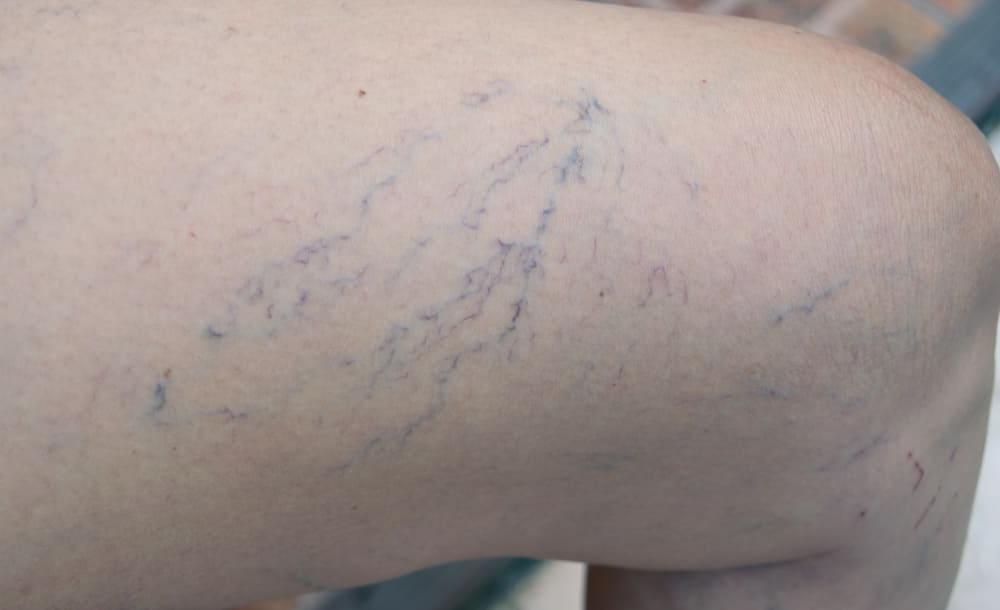
What Does It Mean if Your Veins are Blue and Green?
The common belief that veins are blue is a fascinating aspect of human anatomy, often leading to questions about the underlying reasons for this perception. In reality, veins are not blue; they are typically described as bluish or greenish when viewed through the skin. This phenomenon arises from a combination of factors, including the way light interacts with skin pigments, individual variations in skin tone, and the presence of subcutaneous fat. In this exploration of why veins appear blue, we will delve into the science behind this optical illusion and shed light on the intriguing intricacies of human physiology.
What Are Blue and Green Veins Telling You
According to LiveScience, “veins look blue because light has to penetrate the skin to illuminate them.” Red lights have longer wavelengths, and blue lights have shorter ones, thus red and blue “penetrate with different degrees of success.” The longer wavelength of red allows it to travel further under your skin to where it is absorbed by hemoglobin. The shorter wavelength of blue means that it doesn’t travel as far as red, thus it doesn’t travel as deep under your skin as the red does. In short, the shorter wavelength that “makes it back to your eye is the blue light.”
So why do only veins look blue? This is because, according to Science Blogs, “veins are the only vessels we actually observe through the skin.” Why is that the case? “Veins are larger, have thinner walls, and are more superficial than arteries.” Also, veins are located closer to the surface of the skin. This helps explain the color of your veins, and why your veins are so blue.
Difference between Blue and Green Veins
The difference between green and blue veins primarily lies in the perception of vein color, which can vary from person to person due to several factors, including skin tone, genetics, and the amount of subcutaneous fat. Here’s a breakdown of these differences:
1. Perception and Transparency:
- Blue Veins: Veins typically appear blue when viewed through the skin. This blue hue is a result of how skin scatters and absorbs light. Skin, especially in lighter-toned individuals, can absorb red and reflect blue and green wavelengths, giving veins the appearance of being blue. Veins are not actually blue; they are just perceived as such.
- Green Veins: Some individuals may perceive their veins as green, especially in areas where the skin is relatively thin, such as the wrist or the back of the hand. This greenish tint can be a result of the way different wavelengths of light interact with the skin’s pigments.
2. Skin Tone and Vein Color:
- Skin Tone Influence: Vein color perception can be affected by your skin tone. In individuals with fair or light skin, veins may appear bluer or even greenish due to the skin’s relative transparency. In contrast, those with darker skin may find their veins to appear more green or even brownish, as the skin absorbs more light and conceals the underlying color of the veins.
3. Vein Health and Color:
- Vein Conditions: Changes in vein color can sometimes indicate underlying vein health issues. Veins that appear excessively blue or green, particularly when accompanied by symptoms like pain, swelling, or discomfort, might be a sign of venous conditions such as varicose veins or spider veins. These conditions can alter the appearance of veins, making them more prominent and discolored.
4. Individual Variation:
- Genetics: Genetics play a role in the color of your veins. Some people may naturally have veins that appear bluer, while others might perceive theirs as green. The degree of transparency and the amount of subcutaneous fat can also affect how veins are seen through the skin.
The perception of vein color, whether green or blue, varies among individuals and is influenced by factors like skin tone, light absorption, and genetic predisposition. It’s essential to remember that the actual color of veins is not blue or green; it’s a result of how light interacts with your skin and its underlying structures. Any significant changes in the appearance of your veins, particularly when accompanied by discomfort or other symptoms, should prompt a consultation with a vein specialist to assess your vein health and address any potential issues.
Consult with USA Vein Clinics
If you are concerned about the color of your veins, it’s important to consult with a qualified medical professional, such as a doctor at a USA Vein Clinics facility. While the color of your veins can vary from person to person and can be influenced by factors like skin tone and genetics, changes in vein color may sometimes indicate underlying health issues or vein-related problems.





